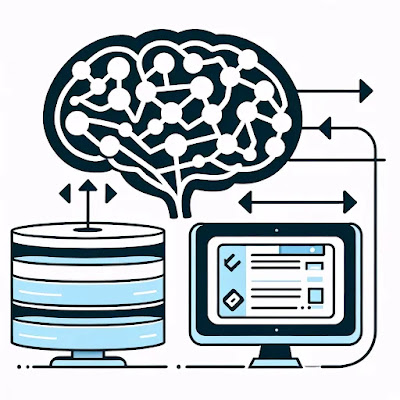IntroductionIn the ever-evolving landscape of technology, the intersection of artificial intelligence (AI) and energy consumption presents a complex but fascinating narrative. As AI applications grow more sophisticated, their hunger for power intensifies. This has led to a pivotal focus on nuclear energy, an often contentious yet increasingly attractive power source for its potential to meet AI's demanding energy needs.
The rapid advancement of AI technologies has revolutionized various sectors, from healthcare and finance to transportation and entertainment. These breakthroughs, while promising, come with a significant caveat: the enormous energy requirements needed to fuel AI's computational prowess. As we stand on the brink of a new technological era, the question of how to sustainably power our AI-driven future becomes increasingly urgent.
This growing concern has sparked a renewed interest in nuclear energy, a power source that has long been surrounded by controversy and debate. Despite its checkered past, nuclear energy's potential to provide large-scale, consistent, and low-carbon power makes it an attractive option for meeting the voracious energy demands of AI systems. As we delve deeper into this topic, we'll explore the intricate relationship between AI's power needs and nuclear energy's capabilities, and how this partnership could shape the future of both technologies.
The AI Power ChallengeThe exponential growth of AI can largely be attributed to the expansion of data availability and computational power. However, as industries and technologies evolve, AI's power requirements continue to surge, outstripping the capabilities of more traditional energy sources. A recent report suggests that AI servers alone might consume as much electricity as a midsize country like the Philippines or Sweden in the near future. Such staggering demand calls for robust, reliable, and scalable energy solutions, with nuclear energy emerging as a formidable contender.
To put this power consumption into perspective, consider the energy requirements of training large language models like GPT-3. According to a study by the University of Massachusetts Amherst, the process of training a single AI model can emit as much carbon as five cars in their lifetimes. As these models grow larger and more complex, their energy needs escalate accordingly. This trend is not limited to language models; AI applications in areas such as autonomous vehicles, climate modeling, and drug discovery all require immense computational resources and, consequently, vast amounts of energy.
The challenge is further compounded by the increasing ubiquity of AI in our daily lives. From smart home devices to personalized recommendation systems, AI is becoming an integral part of the modern technological landscape. Each of these applications, while seemingly small on an individual level, contributes to the overall energy demand when scaled up to millions or billions of users worldwide. This creates a pressing need for energy solutions that can not only meet current demands but also scale effectively to accommodate future growth in AI technologies.
The Role of Nuclear Energy
Nuclear power, with its immense energy output and reliability, presents a promising solution to AI's escalating power demands. For instance, the Susana Steam Electric Station, one of the largest nuclear plants in the US, produces enough energy daily to power a city the size of San Jose for five days. Comparatively, large-scale solar farms would require about 48 times the size to match this output, highlighting nuclear energy's superior density and stability as an energy source.
The advantages of nuclear energy extend beyond its sheer power output. Unlike fossil fuels, nuclear power produces minimal greenhouse gas emissions during operation, making it a cleaner alternative for large-scale energy production. This aspect is particularly crucial as we grapple with the dual challenges of meeting rising energy demands and mitigating climate change. Nuclear power plants also operate with a high capacity factor, typically running more than 90% of the time at full power. This reliability is essential for AI systems that require constant, uninterrupted power supply to function effectively.
Moreover, recent advancements in nuclear technology have addressed many of the concerns associated with traditional nuclear power. Next-generation reactors, such as small modular reactors (SMRs) and advanced fission designs, promise enhanced safety features, reduced waste production, and improved efficiency. These innovations could potentially make nuclear energy more accessible and adaptable to the varying energy needs of different AI applications and data centers.
Technological SynergiesThe synergy between nuclear power and AI isn't just about meeting energy demands; it also includes enhancing the efficiency and safety of nuclear power itself. AI can expedite regulatory processes, optimize plant operations, and even control the conditions inside nuclear reactors. For example, a collaboration between Princeton's lab and the DIII-D National Fusion Facility has employed AI to manage plasma states in fusion reactors, showcasing potential strides toward making fusion energy, a long-standing scientific challenge, a reality.
AI's role in nuclear energy extends far beyond operational optimization. Machine learning algorithms can analyze vast amounts of data from nuclear plants, identifying patterns and anomalies that human operators might miss. This capability enhances predictive maintenance, reducing downtime and improving overall plant efficiency. AI can also simulate complex nuclear reactions and plant designs, accelerating the development of new reactor technologies while minimizing the need for costly and potentially risky physical experiments.
Furthermore, AI has the potential to revolutionize nuclear waste management. Advanced algorithms can optimize the storage and disposal of radioactive waste, minimizing environmental impact and improving long-term safety. AI-driven robotics could also play a crucial role in decommissioning old nuclear plants and handling radioactive materials, reducing human exposure to hazardous environments. As these technologies continue to evolve, the symbiotic relationship between AI and nuclear energy promises to address many of the historical concerns associated with nuclear power.
Challenges and Opportunities
Despite its potential, nuclear energy faces numerous challenges, including safety concerns, regulatory hurdles, and high costs associated with new technologies like Small Modular Reactors (SMRs). However, the increasing urgency for sustainable energy sources has reinvigorated interest and investment in nuclear power. Governments and private sectors are exploring incentives, research funding, and regulatory reforms to harness nuclear energy's full potential.
One of the most significant challenges is public perception and acceptance of nuclear energy. Disasters like Chernobyl and Fukushima have left lasting impressions on public consciousness, leading to widespread skepticism about nuclear safety. Overcoming this perception barrier requires not only technological advancements but also transparent communication and education about modern nuclear technologies and their safety measures. AI could play a crucial role in this aspect as well, helping to simulate and visualize safety protocols, and providing real-time information to the public about plant operations and safety status.
The economic viability of nuclear power is another critical challenge. The high upfront costs of building nuclear plants have often deterred investment, especially in the face of cheaper alternatives like natural gas. However, the long-term cost-effectiveness of nuclear power, coupled with the growing recognition of the need for clean, reliable energy sources, is shifting this calculus. Innovative financing models, such as public-private partnerships and long-term power purchase agreements, are emerging to address these economic challenges and make nuclear projects more attractive to investors.
Big Tech's Nuclear Ambitions
Major tech companies are already exploring nuclear energy to power their data centers. Amazon, for example, has invested in a data center directly powered by nuclear energy, securing fixed-price energy contracts to stabilize costs. Microsoft and other tech giants are also integrating nuclear power into their energy portfolios, balancing it with renewable sources to ensure a constant, reliable supply.
These moves by big tech companies signal a significant shift in corporate energy strategies. Traditionally, tech giants have focused on wind and solar power to meet their renewable energy goals. However, the intermittent nature of these sources poses challenges for data centers that require constant, high-capacity power. Nuclear energy offers a solution to this problem, providing a stable baseload power that can complement variable renewable sources.
The involvement of tech companies in nuclear energy goes beyond mere consumption. Many are actively investing in nuclear research and development, particularly in advanced reactor designs and fusion technology. For instance, Microsoft has partnered with nuclear fusion startup Helion Energy, while Google's parent company Alphabet has invested in Commonwealth Fusion Systems. These investments not only secure future energy supplies for these companies but also accelerate the development of next-generation nuclear technologies that could have far-reaching impacts on global energy systems.
Conclusion
As AI continues to evolve, its energy requirements will only grow, making the integration of technologies like nuclear energy crucial. While challenges remain, the advancements in nuclear technology, combined with AI's capabilities, could usher in a new era of energy use that is both powerful and sustainable. The future of AI and nuclear energy is not just about fueling machines but also about powering innovation that can transform industries and societies.
The convergence of AI and nuclear energy represents a pivotal moment in technological and energy history. It offers the potential to address some of our most pressing challenges, from climate change to data-driven innovation. However, realizing this potential will require careful navigation of technical, economic, and social challenges. It will demand collaboration between technologists, policymakers, and the public to ensure that the benefits of this powerful partnership are maximized while risks are minimized.
As we look to the future, the relationship between AI and nuclear energy will likely continue to evolve in unexpected ways. The innovations born from this intersection could extend far beyond our current imagination, potentially revolutionizing fields such as space exploration, advanced manufacturing, and even our understanding of fundamental physics. By embracing this synergy responsibly and creatively, we have the opportunity to shape a future where our technological ambitions are powered by clean, abundant, and sustainable energy.

















